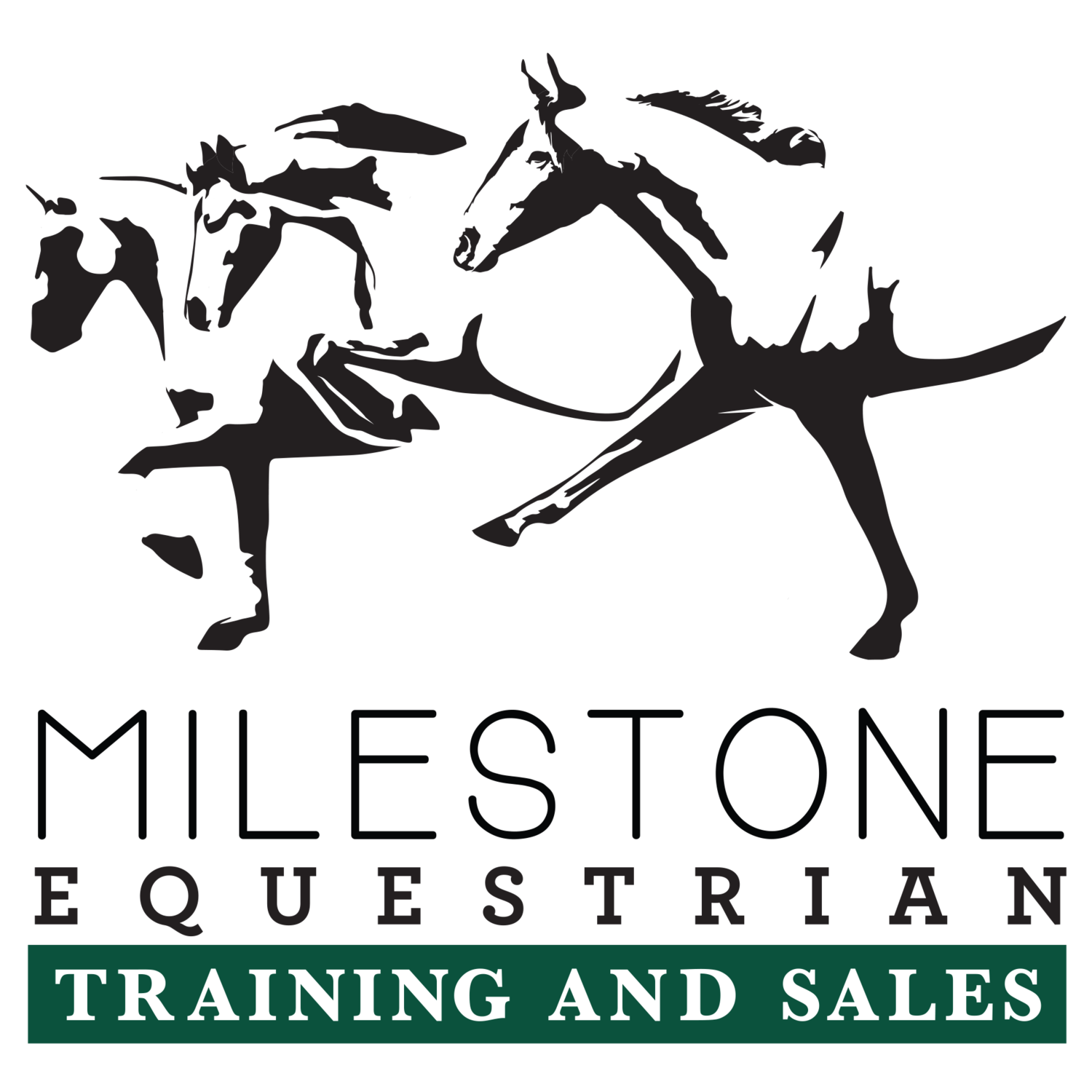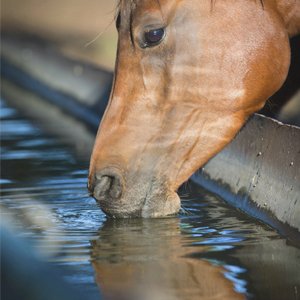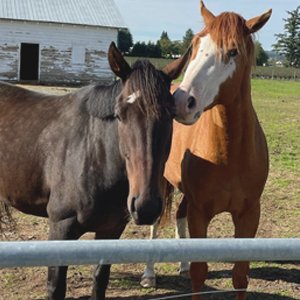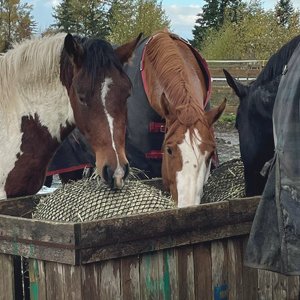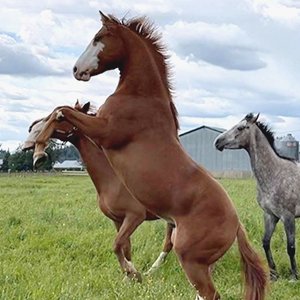Welcome to my resources page.
My hope with this page is to provide some reading information for those hoping to learn more about horse training and management but being unsure of where to start. The sources I provide here are many that I was given during my equine science courses through Guelph University as well as any relevant studies pertaining to horse training and care. I hope this page will allow people to study the care and maintenance of their equines using scientific resources rather than being limited to the personal opinions of the horse people in their life. The horse world really does need to respect the art of scientific study more, and I hope by providing you with some easily accessed resources will help to jump-start a curiosity and thirst for new information.
Reading Equine Facial Communication.
Horses as a species have been done a disservice, in my opinion, due to the lack of regulation surrounding training as well as how archaic much of our practices are in the handling and training of horses. Equine behaviour, as a general rule, is either not taught accurately at all or oversimplified. Horses are emotional and complex animals who have many subtle behavioural cues that, if recognized, could keep riders and horses alike safer and happier. Signs of pain, stress and anxiety are crucial to be able to decipher and many of these signs are not as overt as people make them out to be.
The Equine Grimace Scale was developed by equine scientists as a means of assessing the presence of pain in horses, using a scale to determine whether or not pain is likely to be present. This is one of the best starter resources for people wishing to develop their eye for Equine Behaviour, learning the subtleties of it will only serve to make you a better horse person. The study of horse behaviour has been crucial for offering credible information to those who may be more sceptical or stuck in their ways within the horse world. Learn more on behaviour by accessing some of the studies listed below or listening to my basic equine behaviour series on YouTube.
One of the other basic considerations for optimal equine welfare is the 3 Fs: Friends, Forage and Freedom.
These 3 Fs refer to the horse’s ability to naturally move around and continue to graze on forages like hay and grass throughout the day, as well as exercise their natural need for socialization as a herd animal. Freedom, in specific, refers to the ability to practice natural behaviours and enough space to move around. Horses are trickle feeders, meaning their bodies are engineered to take in small amounts of food constantly throughout the day. For them, normal behaviour is walking upwards of 20 kilometres a day with their heads down grazing. While this may not be totally possible in captivity, it is something we need to model as closely as possible or we see a large increase in problems like colic, ulcers and stereotypic behaviours (also known as stall vices) such as cribbing and weaving.
+ Turnout & Stable Management
The Freedoms are as follows:
1. Freedom from hunger and thirst
2. Freedom from pain, injury and disease
3. Freedom from distress
4. Freedom from discomfort
5. Freedom to express behaviours that promote well-being
Pertaining to horses in specific, many of these basic freedoms are ignored on a pretty extensive basis in the industry. While most horse people do provide freedom number one, the rest are frequently ignored in ways that many equestrians find subtle enough to not even be aware of if they’re providing them or not. Freedom from pain, injury and disease would include both physical pain like ulcers, poor saddle fit, harsh training methods, working through lameness but would also include psychological pain. Unfortunately, horses are such stoic animals that a lot of their more subtle pain signals are ignored. Biting and kicking at handlers when being girthed, backing off to leg and kicking out when they’re asked to go forward, ringing their tails consistently throughout an entire ride.
Many of these behaviours are written off as “spiciness” or “quirks” when from a behavioural perspective, they’re viewed as communication of pain, stress, uncertainty, fear and so on. Freedom from distress, in my opinion, is most commonly ignored in the basic management of horses. Commonly kept isolated in stalls, with no ability to even see, let alone touch, other horses. This is the largest factor found in studies to contribute to stall vices. Stalled horses not only have a way higher occurrence of colic, ulcers and other ailments, but they’re some of the only horses to exhibit stereotypies like stall walking, cribbing, weaving and wood chewing. These behaviours are adopted by horses as a means of coping with stress. Think of them like stims that anxious people use, such as tapping a leg, snapping an elastic band on their wrist, pulling out hair and so on and so forth. Unfortunately, unlike humans, these behaviours are far too commonly misread, with people equating things like weaving to “dancing” rather than a stress response or viewing cribbing as a simple quirk their horse has. Freedom from discomfort also goes hand in hand with freedom from distress. Stalled horses suffer from circulation and respiratory issues due to standing still for extended periods of time, inhaling ammonia and otherwise dusty air but more markedly, psychological issues and discomforts associated with boredom.
Lastly, freedom to express natural behaviours is so commonly robbed from our beloved horses. It is completely against their nature to live in forced isolation in small areas where they lack the ability to move but these resilient animals cope fairly well with it, however, there are certain tells, along with stall vices, that show they’re not coping as well as we think. The horse who “hates other horses” or “hates turnout” is only that way due to developing atypical anxiety behaviours that resulted in them acting out in fear, aggression or stress when faced with something a normal horse would cope will with and enjoy, had they not been deprived of it for so long. Like humans, horses develop anxiety towards things they’ve not had to experience, such as being thrown out of a 12x12 box immediately into a large open area. It incites anxiety that humans mistake for dislike for turnout, rather than addressing why they have said “dislike”. At its core, our biggest issue as equestrians is that we are more than willing to modify the behaviours that affect our ability to enjoy our horses, like if they stop at a fence. But, when it’s something that just affects the horse and their day to day life, meaning we don’t suffer, there is less motivation to recondition the behaviour and this is something that needs to change.
* can also be due to vitamin deficiencies.
+ Further Studies And Credible Articles on Equine Management
Training Theory
The horse world, in studies, has been found to be very far behind when it comes to welfare practices. It is my belief that this stems from lack of education on aspects of equine behaviour from the start of many equestrians’ riding careers. They are indoctrinated into ignorance by simply never learning some of the most basic and important parts of horse care, being able to appropriately decipher behaviour signals. It is far too common, even with modernized study and research, for people to label equine behaviours as “disrespectful” or “on purpose” which results in riders growing frustrated with their horses and taking it out on the horse with the belief that the horse is reacting just to spite them. This mindset is very hard for people to come to terms with and let go, because acknowledging it often brings some level of guilt when people begin to realize where they’ve wronged their horses. This is normal and while you may want to avoid feeling guilty, there is nothing you can do to honour your horse more than educating yourself to help ensure you’re not making harmful assumptions with regards to their behaviour. Educational growth is never something to be ashamed of, developing as you retain new, more credible information is a strength and the best way to do right by your horse is continuing to grow your practical training and care knowledge with respect to science based methods, just like you expect them to continue to grow in your training.
A lot of people are confused about the terms in training theory, so before you get into the studies, here is a crash course on what people are referencing when they use the following training terms:
+ R- / Negative Reinforcement
+ R+ / Positive Reinforcement
+ P+ / Positive Punishment
+ P- / Negative Punishment
One of the biggest problems with horse training is the lack of ability for even the most “experienced” trainers to differentiate between equine behaviour signals. This means pain related behaviour is often attributed to being bad behaviour and calm, quiet, non-spooky behaviour is often referred to as good behaviour or as an indicator of enjoyment of their job even if said behaviour stems from learned helplessness. Horse people need to educate themselves further on a scientific basis to avoid falling prey to mislabelling behaviours. Read more on learned helplessness: here
I want to start this particular list of resources off with a quote from the conclusion of the following study, as I believe at its core, this is what I am trying to achieve in sharing these resources:
[There is a] strong need for specific research and training of humans working with horses in order to improve the human–horse relationship that, as shown by the high incidence of accidents and increasing number of horses with a decreased welfare is far from optimal.
+GENERAL STUDIES ON HORSE TRAINING & LEARNING THEORY
+COMPARING TRAINING METHODS (R+/R-) STUDIES
How To Find Good Resources
Many people struggle to decipher a credible source from a non-credible one, so here are some good web resources for further reading as well as search engines you can use to ensure you are only looking at scholarly articles. Studies with larger sample sizes are more likely to produce a credible result than ones with smaller sample sizes. It’s also important to use caution when the person or entity performing the study has monetary gain from the result of it, as seen from studies like the Dr. Cook Bitless study, these ones are more likely to have bias.
